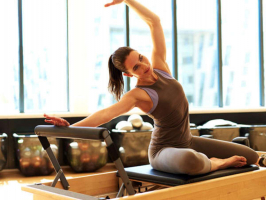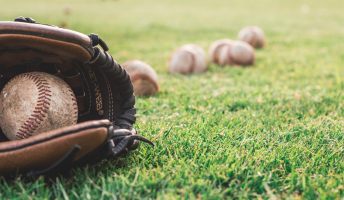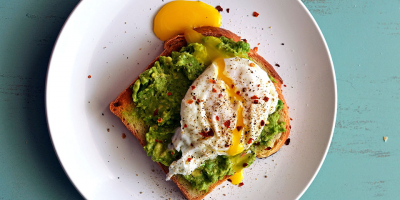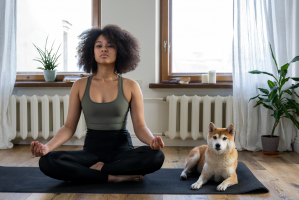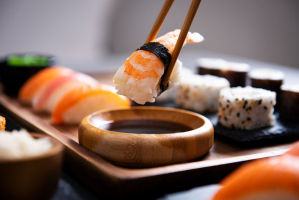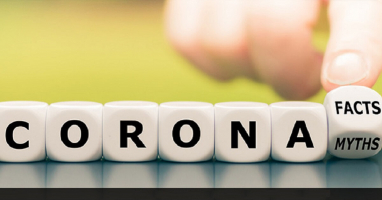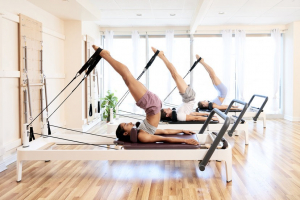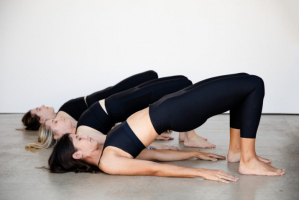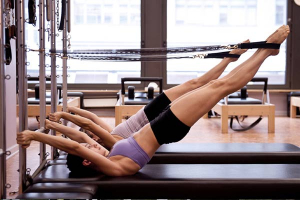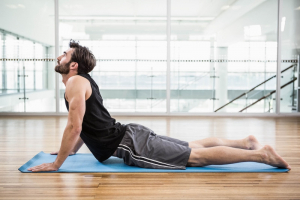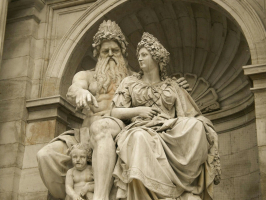Top 7 Myths About Pilates Debunked
Pilates is a regimen of exercises established over a century ago by Joseph Pilates to improve the body and mind. Despite the fact that Pilates has been around ... read more...for a long time and is extensively performed all over the world, there are still a lot of misunderstandings about it. Today, we'll debunk some myths about Pilates .
-
Pilates and Yoga may appear to be comparable exercise practices on the surface, but they are actually quite distinct. This one is causing a gnashing of teeth for both Pilates and yoga practitioners, especially teachers who have students who assume yoga and Pilates are equivalent.
First of all, yoga has religious roots (it dates back over 5,000 years in India), whereas Pilates was designed with rehabilitation and physical fitness in mind. Second, Pilates and Yoga employ quite distinct breathing and focus approaches. You'll need to breathe in and out through your nose in flow-based Yoga lessons, synchronizing your deep breaths to the movements and postures. In Pilates, however, you inhale through your nose and exhale through your mouth. Finally, Pilates sessions provide a full-body exercise with a focus on spine alignment and core strength. In yoga, you tend to train every muscle in your body equally, with little emphasis on any one muscle group in particular.
While Joseph Pilates, who is credited with inventing and promoting the Pilates method of physical fitness, may have been introduced to yoga and studied a variety of fitness and body/mind disciplines, there is no historical evidence that he took yoga seriously. While Pilates and yoga are complementary, they are also quite separate techniques.
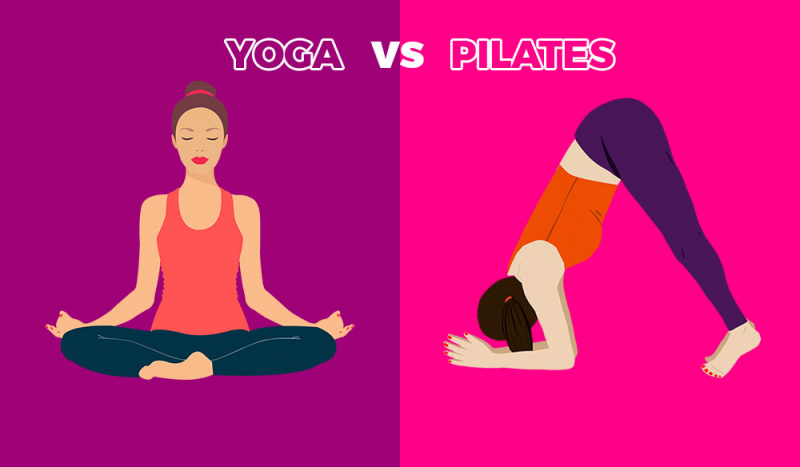
Source: kickfit-sports.com -
Pilates, in fact, was designed with males in mind and was only subsequently modified for women! Joseph Pilates, the founder of Pilates, was a bodybuilder, boxer, gymnast, and dancer. He intended to develop a method that would assist people to increase their strength, structural alignment, and athletic performance while also lowering their injury risk. Pilates has also been adopted into the training rooms of professional athletes and teams, as many guys like this kind of exercise. Basketball players LeBron James and Kobe Bryant, as well as golf champion Tiger Woods, are two instances.
Pilates training emphasizes core strength, flexibility, balance, consistent growth, and efficient movement patterns, all of which are important for men's fitness. Pilates' integrative component can be especially advantageous for males, whose routines generally stress a piecemeal approach to muscle development, similar to what is found in weightlifting. Pilates, on the other hand, focuses on moving from the powerhouse to the center of the body and developing core strength in the deep muscles of the center to support the trunk and protect the back. Pilates is a fantastic approach for total-body fitness and as a basis for cross-training with other sports and exercises because of this type of core training.
Pilates addresses the objective of increasing flexibility in a way that many men find appealing. Pilates focuses on achieving functional fitness. That is, the capacity to move through daily duties with elegance and ease because of one's strength, balance, and flexibility. To this purpose, Pilates workouts aim to enhance flexibility and range of motion, although, unlike gymnastics or yoga, Pilates does not include pretzel stretches.
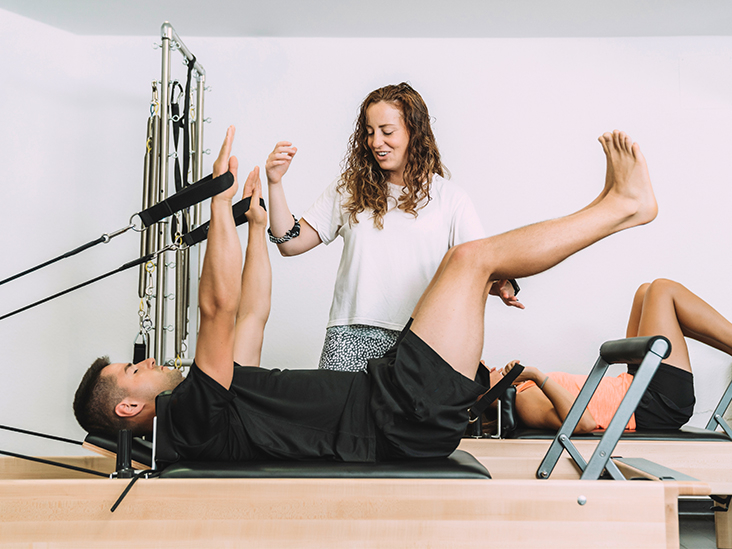
Source: healthline.com 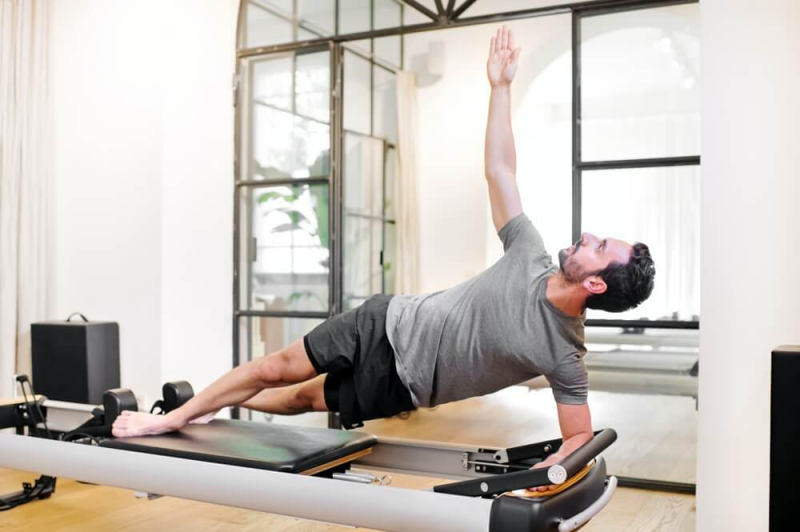
Source: pilatesonpoint.com.au -
Many people assume that Pilates can only be done with complex and expensive equipment. This is absolutely one of the most common myths about Pilates. While equipment might help you improve your practice, you can complete all of the basic exercises on a mat. The resistance in Pilates is your own body weight. Springs, pulleys, and bars can create a more difficult workout, but they aren't required. Don't let these machines frighten your students; instead, emphasize that they're exclusively utilized in certain types of Pilates courses.
Pilates is a great way to tone and improve your muscles without using any equipment. To have good exercise, all you need is your body to offer resistance. Many individuals choose to perform Pilates without any equipment since it is an excellent method to stay in shape and strengthen their bodies. That isn't to claim that utilizing equipment enhances a workout; it can provide a greater challenge and make you stronger than using only your body weight; it simply means that you don't need any specific tools or machinery to practice Pilates properly.
Nothing except your own body weight and a mat are required. The experts have even proposed utilizing regular household objects instead of specialized equipment in some workouts, such as using food tins instead of hand weights. Pilates' popularity stems from the fact that it is simple enough for anybody to undertake, regardless of age or fitness ability. Pilates is a low-intensity workout that you can do at home with great simplicity, and you won't get too sweaty. Many individuals like to perform Pilates in their living rooms since it is comfortable and requires no extra equipment or space.

Source: istockphoto 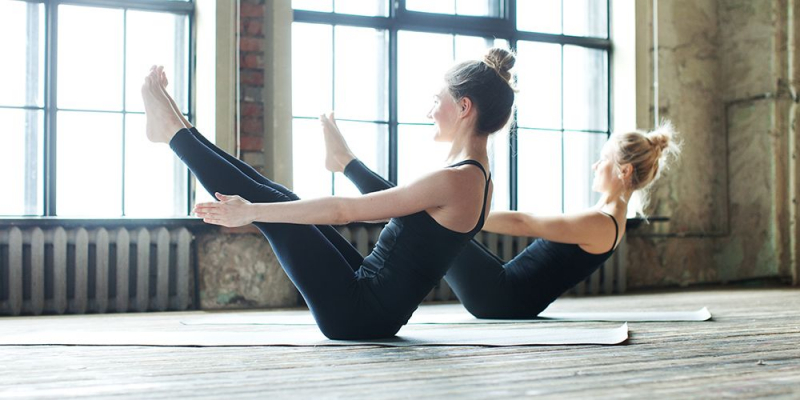
Source: incountryvalueoman -
This is also one of the myths about Pilates that countless people have because nowadays there are many young people who care about their body shape and most of them use Pilates to improve their abs. There are no fast solutions, although Pilates can assist in the development of a solid body. Pilates focuses on the core muscles, particularly the deeper abdominal muscles. Toning the abdominal and pelvic floor muscles improves overall body stability and mobility. This is also one of the reasons why Pilates is so effective for persons suffering from back discomfort.
Pilates, on the other hand, does not end with abdominal work. Pilates fitness focuses on structural integration and the development of a flexible, robust body that can move easily and effectively. Pilates does this by working all body parts in a balanced manner, not just the abs. The Pilates technique is also a mind-body fitness exercise. A calisthenic or spot-reduction method to exercise is insufficient for developing a physique that operates as a unified whole. Control, centering, attention, breath, flow, and accuracy are all Pilates characteristics that enable an integrated mind/body experience via Pilates practice. This means that you will not only have toned abs but you will be toned in the whole body and have a pure mind.
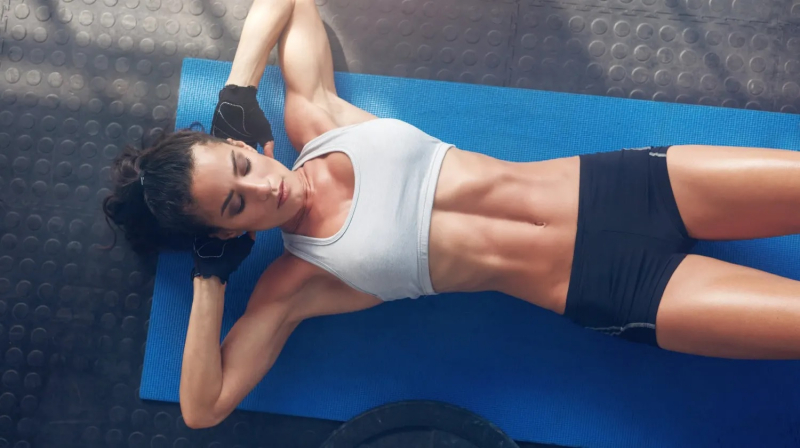
Source: sunwarrior 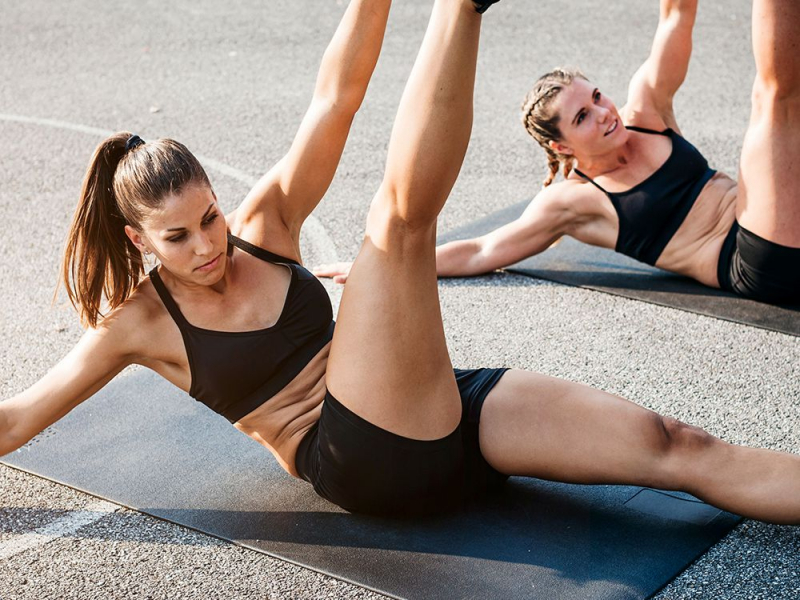
Source: byrdie -
Pilates is far more than a stretching session. Stretches are included in the workout, but to get the most out of it, you'll need a strong sense of control and attention. The lengthening exercises are done to assist you to increase core strength while your entire body is in action. Pilates employs the resistance and weight of your own body to perform regulated motions. When executing this workout, it's also crucial to maintain good posture and balance. It's misleading to state that Pilates is only about stretching because there are so many other aspects to it. It's all about focusing and regulating different portions of the body while improving the mind-body connection.
Stretching is essential for keeping muscles supple, long, and oxygenated. It permits muscles to move easily and without becoming stiff. Strength is more about the quality of movement than it is about mass. Control is the ability to operate the muscles intentionally to achieve the desired effect: slowing down a motion, stopping a muscle at a certain place in space, or working dynamically and at a fast tempo. Pilates restores bodily equilibrium; it does not over-exert one muscle group or train it in isolation, but rather works it holistically and interconnectedly. It incorporates a variety of movement principles in several dimensions, allowing the body to be strengthened to its greatest potential. Pilates was created by Joseph Pilates to teach people how to move naturally like animals.
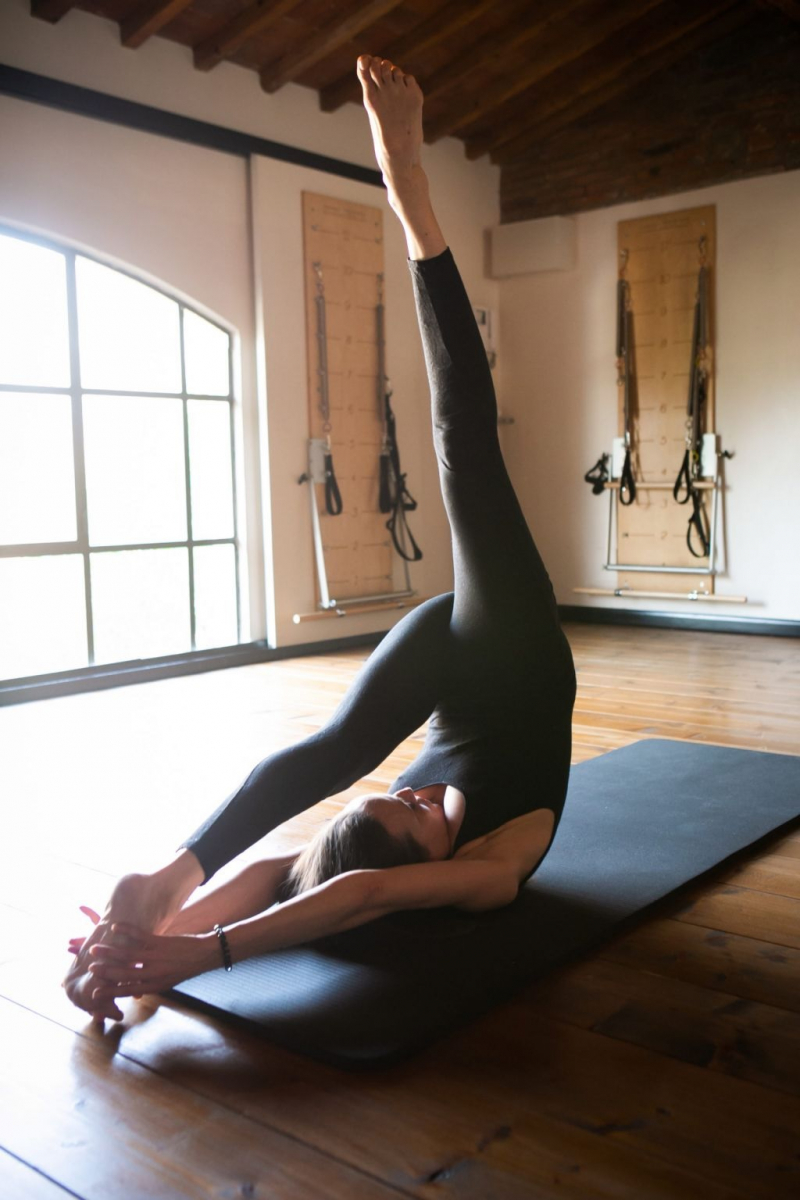
Source: lostudioesse 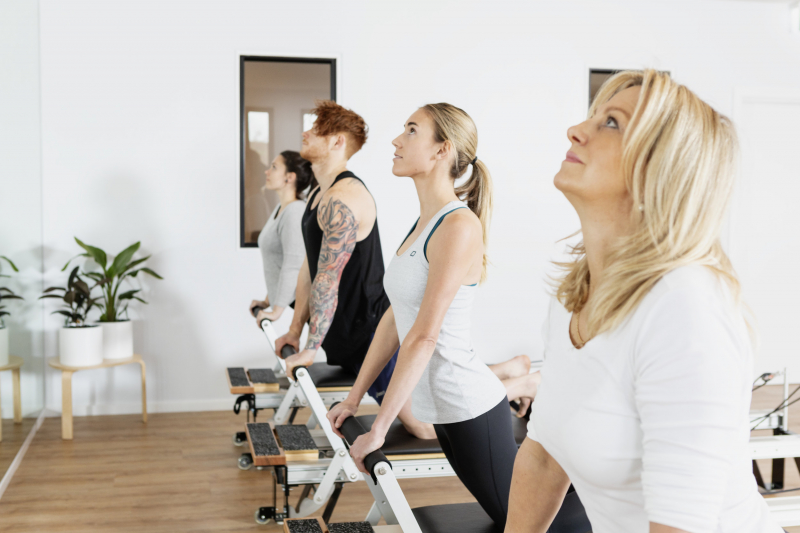
Source: eurekaosteo -
Because of what they may have heard, some individuals may believe this is an easy workout. Pilates may appear straightforward to the untrained eye since the motions are performed slowly. Even if this is true, every activity involves the complete body. Slower movements need greater control, which helps to develop the core and muscles. It's worth noting that Joseph Pilates, the workout's originator, intended it to be called Contrology at first.
Pilates is also an activity that may be tailored to a person's specific needs. Because they've only seen it in its most basic version, this may encourage people to feel it's simple. Several gyms and studios provide beginner-level sessions, preventing consumers from seeing the more difficult forms. Some workouts use devices like the Reformer and Wunda chair to raise the level of effort. This equipment can make the workout more strenuous, but they aren't always required.
Pilates is like any other sport in that it ranges from easy to difficult. For the beginners who often practice Pilates at home, they will practice quite simple movements. For those who want to practice intensively, they need additional equipment and obviously, this is not simple at all. Therefore, people should choose a suitable direction for themselves when deciding to practice Pilates.
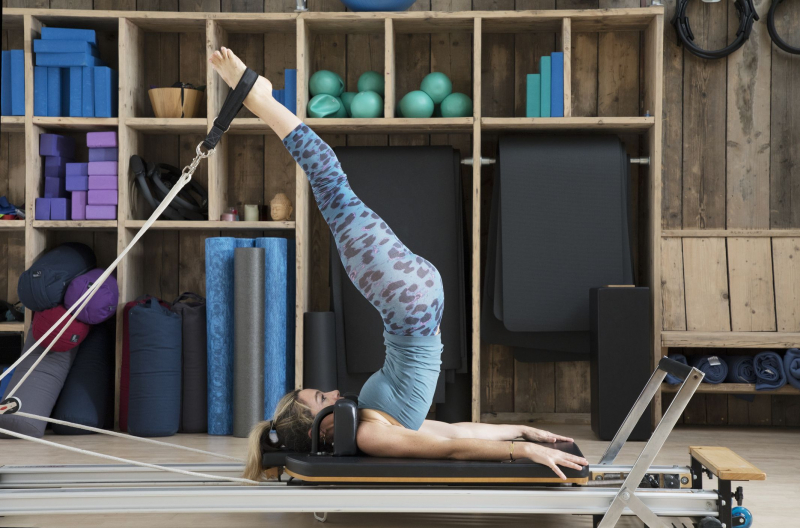
Source: harpersbazaar 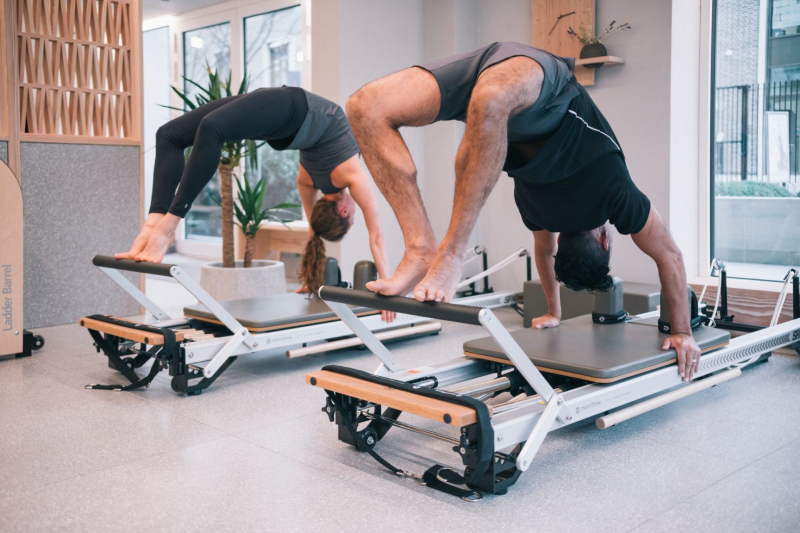
Source: corepilatesstudios -
Another myth about Pilates is that it requires tremendous flexibility to participate. People may be surprised to learn that if they aren't flexible, Pilates may be precisely what they need. Pilates, in fact, improves flexibility. Pilates is well-known for its ability to help people gain strength and flexibility. The stretch and strength equation's strength component is crucial. When one stretches a muscle or improves the range of motion in a joint, it aids in maintaining physical integrity and alignment. The body is pushed to realms that individuals may not feel are conceivable because of the workout's extended motions and stretches. Because our bodies are made up of 75% water, they may alter and respond to the workouts with consistent training. Your body will get more flexible and lithe the more you do it.
These extended motions, like those of a beautiful dancer, will assist the body to naturally flow and become more fluid. So, if your pupils believe they aren't flexible enough, don't let them feel frightened. Encourage them to do what feels right for them by incorporating changes into the practice and assuring them that their bodies will get there eventually.
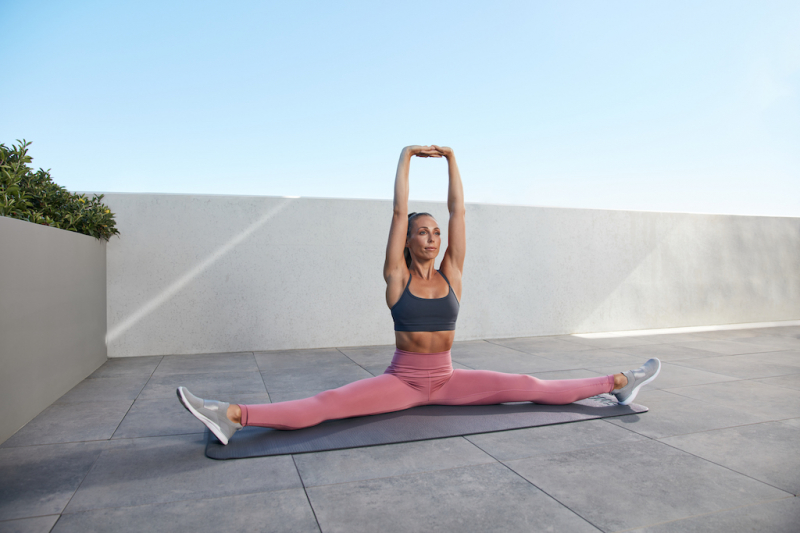
Source: sweat.com 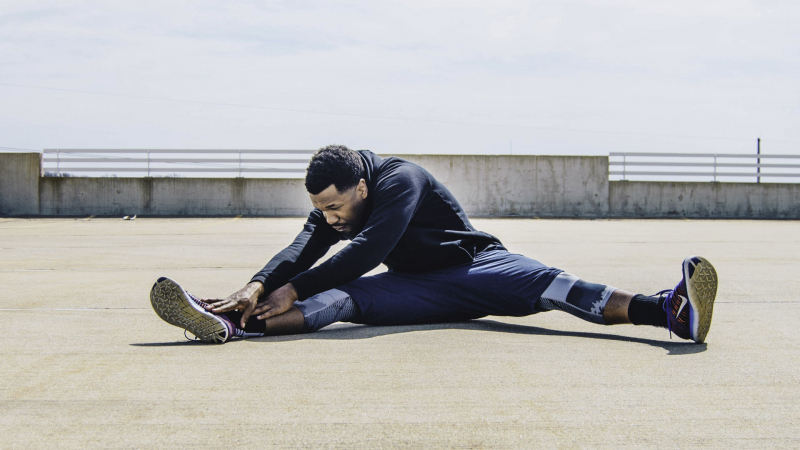
Source: pilates.com.sg









